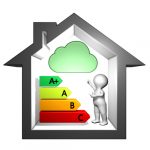How to Test, Monitor, and Improve Indoor Air Quality in Your Home
December 13, 2023 3:09 pm Leave your thoughts
1. Testing the Air Quality
The first step towards improving indoor air quality is to determine the level of pollution in your home. This can be done by conducting an air quality test. Several options are available to perform this test, ranging from DIY test kits to hiring professionals. The DIY test kits are usually affordable and easy to use. They can provide you with basic information about pollutants such as allergens, mold, and volatile organic compounds (VOCs) present in your home.
2. Identifying Sources of Pollution
Once you have tested the air quality, it is important to identify the sources of pollution within your home. Common sources include smoking, odors from household products, pet dander, dust mites, and mold. By determining the sources, you can take necessary actions to reduce or eliminate them. For instance, you can create a designated smoking area outside the house or use natural cleaning products with fewer chemicals.
3. Proper Ventilation
Proper ventilation is essential to maintain good indoor air quality. It helps in exchanging the stale air with fresh air from outside, reducing the concentration of indoor pollutants. Opening windows and doors regularly can improve air circulation. Additionally, installing mechanical ventilation systems, such as exhaust fans, can efficiently remove pollutants from areas prone to moisture accumulation, such as bathrooms and kitchens.
4. Regular Cleaning and Vacuuming
Keeping your home clean and dust-free is crucial in maintaining good indoor air quality. Regular cleaning and vacuuming can help in removing dust, pet dander, and other particles that might be present in your home. Use high-efficiency particulate air (HEPA) filters in vacuum cleaners for better filtration of fine particles. Pay special attention to carpets, bedding, and upholstery, as they can retain allergens and pollutants.
5. Monitoring Humidity Levels
Monitoring and maintaining appropriate humidity levels in your home is essential to prevent mold and other moisture-related problems. High humidity levels can promote the growth of mold and bacteria, leading to poor indoor air quality. The ideal humidity range is generally between 30-60%. You can use a hygrometer to measure the humidity levels and employ dehumidifiers or humidifiers as necessary to maintain optimal levels.
6. Air Purification Systems
Investing in air purifiers is an effective way to improve indoor air quality. Air purifiers equipped with HEPA filters can trap and remove various harmful particles, including allergens, dust, pet dander, pollen, and even some viruses. Make sure to choose the right-sized purifier for your room and keep it running consistently to maintain continuous air purification.
7. Avoid Chemicals and Artificial Fragrances
Many household products, including cleaning agents, air fresheners, and cosmetics, contain chemicals and artificial fragrances. These substances can release harmful VOCs into the air, negatively impacting indoor air quality. Opt for natural and chemical-free alternatives whenever possible to reduce the exposure to these pollutants. Look for products labeled as “fragrance-free” or “free of VOCs” to ensure safer indoor air quality.
8. Regular HVAC Maintenance
Your heating, ventilation, and air conditioning (HVAC) system plays a significant role in maintaining indoor air quality. Regular maintenance, such as cleaning or replacing filters, helps in keeping the system efficient and reducing the circulation of pollutants. Consider scheduling professional checks and cleaning of your HVAC system at least once a year to ensure optimal performance.
Summary
Testing, monitoring, and improving indoor air quality in your home is essential for a healthy and comfortable living environment. By conducting air quality tests, identifying sources of pollution, practicing proper ventilation, regular cleaning and vacuuming, monitoring humidity levels, using air purifiers, avoiding chemicals, and maintaining HVAC systems, you can create a cleaner and healthier indoor environment for you and your family to enjoy.
Need a HVAC Technician in Mabank, TX?
Ken’s Comfort Zone Air Conditioning is proud to remain a family-owned and -operated business, providing residential clients and businesses alike with a complete range of central heating, air conditioning, and ventilation services, including service calls, repairs, and installations. We’re proud to have been awarded the Monitor Newspaper 2015 Ceder Creek Lake area Readers’ Choice Award for best air conditioning contractor. Additionally, we carry an A+ rating with the Better Business Bureau and are members of the local Chamber of Commerce and the NFIB. For your peace of mind, Ken’s Comfort Zone Air Conditioning is fully licensed, bonded, and insured. Call us today for all of your HVAC needs!
Categorised in: Air Quality, HVAC
This post was written by admin
